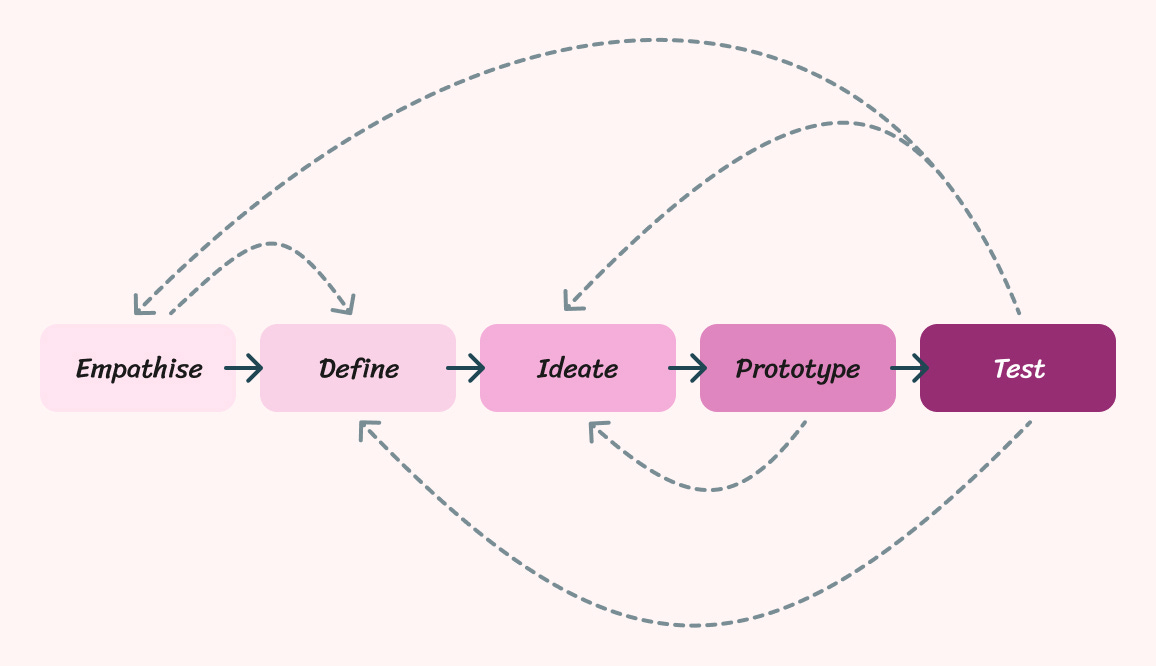001 — Customer first, reduce risk and speaking the language of business
Hey 👋
Welcome to the UX MBA — I write about connecting the dots, between business outcomes and customers experience, to deliver impactful design work.
There’s going to be very little advice about UX tools or methods. Instead, I will focus on principles to help you create more impact by focusing on the business of design. From the research, experiments, and metrics required to prove the value of design aligned to business objectives.
Estimated read time: about 3 minutes.
Three examples
1. If first interaction with a customer/user is when you Test solutions – you’re doing it wrong.
When you start with ideas, solution or technologies – you’re starting with limiting constraints. Start by talking to customers and relevant stakeholders to uncover insights that will lead to divergent solutions. And, stack multiple bets against the inconvenient truth that at least half the ideas are not going to work. So don’t start with converged thinking.
2. Experiments help to reduce risk!
Instead of over investing in a solution that doesn't excite your target customer. Test the assumptions that have weak evidence and are important, reduce the size by assumption testing the viability, feasibility, desirability, usability, and ethics of each.
Here are five examples:
a) Customer interviews is always the place to start to explore the desirability and viability of assumptions by focusing on their jobs, pains, gains and willingness to pay
b) Search trend analysis is a great way to perform market research on particular search terms volume and related queries that align to your assumptions.
c) Online adverts can test your assumptions value proposition with a simple call to action with your target audience.
d) Concierge service where you manually deliver the value to the customer, whilst learning how to better capture and deliver value.
e) Reverse income statement will help you to understand just how viable your assumptions are – by working backwards to prototype the numbers required to achieve a desired business outcome, combined with your current conversion rate you can go as far as understanding how many dally visitors you’ll need to attract to meet your goal.
From David Bland and Alexander Osterwalder’s book Testing Business ideas
3. Until designers learn how to speak the language of business, the value of their work remains unclear.
As a designer, it’s your job to uncover stories from subjects in exploratory research to create concepts and apply them to digital product design.
Through compelling storytelling, patience, and the craft that goes into translating theoretical concepts and behaviours into novel humane experiences.
Since you’re selling qualitative research, you’re primarily selling an abstract idea to how you can positively affect a business outcome.
Unfortunately, Executives aren't concerned with qualitative improvements because their success is measured in quantitative metrics.
Try the extrapolating your qualitative findings into assumptions that estimate the ROI.
Couple of tips
1. Are people using your product…?
This talk by Josh Elman on The only product metric that matters is a must watch, to understand what metrics matter to your best customers. Ultimately, how many times do they perform the core actions on the expected frequency of use?
2. As a guest on the design MBA podcast, Dave Huber spoke about how design leaders can implement the Business of Design and why you should care.
He also wrote a nice post on articulating the value of design, and why it’s crucial we advance our ability to measure what matters and articulate our impact on business outcomes.
One last thing
Why the Rockstar award isn't that effective in motivating a team to have impact!
Thanks for reading,
Founder and blogger at UX MBA.






